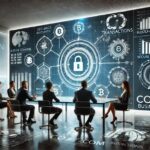Artificial intelligence, moving from really simple applications to its powerful uses today, influences changes in the creation of visual content. It’s going to be more about accessing digital arts driven by AI and also about efficiency and innovation. However much the shape in which this way of image designing was introduced is likely to take a turn this way or that with advertising, games, and other marketing media.
Most exciting, however, is perhaps one of the biggest developments in this space: through the use of AI image generator tools. The idea behind these systems-to allow users to create stunning visuals from simple, text-based prompts without needing complex design skills or highly priced software-is brilliant. But how does this technology work, and where does
How AI is Changing Visual Design
AI-powered tools have to employ high-end machine learning models in deeply understanding composition, color, and artistic style from the mass of visual information they process. It helps the tool generate images according to users’ tastes and preferences.
Key Technologies Behind AI-Generated Visuals
Generative Adversarial Networks: GAN models create realistic and artistic images, getting progressively fine-tuned through a feedback loop between two neural networks.
Diffusion Models: AI creates an image from random noise in steps, immense in detail, toward very accurate results. Neural Style Transfer: This is a method where an image’s “style” is taken and applied to another. One can change photos into digital paintings or some form of artistic interpretation. Equipped with such innovation, designers and businesses can create unique, personalized visuals with little effort in record time.
Latest Trends in AI-Generated Content
1. Text-to-Image Creativity
Now, users can type a description and get an AI-generated visual matching it. Marketers, content creators, and designers find it very helpful in getting high-quality visuals without having to employ professional illustrators.
2. Hyper-Realistic Digital Art
AI is able to generate highly detailed life-like images; hence, these are useful for game development, filmmaking, and virtual reality applications.
3. AI-Assisted Editing
Many of them let users dynamically edit an image rather than build it from scratch.
4. 3D and Animated Content
More advanced, some of those models already can let users create 3D renderings; some can support the creation of AI-generated video sequences from textual descriptions.
5. Integration with Augmented and Virtual Reality
AR and VR are becoming more immersive, thanks to AI visuals that build up interactive, realistic digital environments.
Industries Benefiting from AI-Powered Design
1. Marketing & Advertising
Brands use AI-generated images to create hyper-personalized and interactive campaigns, moving beyond plain generic stock images for custom, on-brand content.
2. Gaming & Entertainment
Gaming developers and animators apply AI to the creation of concept art, textures, and even entire virtual universes, accelerating production timelines.
3. E-Commerce & Product Visualization
Retailers use AI to create images of products so that customers can view an item more realistically before making a purchase.
4. Education & Training
The teachers and online learning platforms introduce course materials using AI-generated diagrams, illustrations, and infographics.
5. Interior Design & Architecture
With the help of AI-enhanced renderings, architects and designers can swiftly visualize projects while trying multiple styles and layouts.
Ethical Challenges and Future Considerations
While AI-generated content opens an entirely new world of possibilities, it brings along a whole host of concerns at the same time. For example, there are copyright and ownership issues to consider because the AI is learning from pre-existing artworks and images. There is also the risk of misinformation, as AI-generated graphics can create deceptive images in a way that further complicates what is real and what is artificially generated.
Prejudiced Training Data: Unless AI is trained with unbiased data, it may result in stereotypical images that are not diverse.
Companies are trying to fix these problems by watermarking AI-generated visuals and setting rules for the ethics of AI.
The Future of AI in Digital Creativity
We’re just beginning to understand how AI-driven visual tools will continue to evolve. In the near future, we can expect:
AI-powered design assistants collaborate with human artists.
All-in-one creation of interactive and animated content in real time, AI tools learn the artistic style and preferences of a user while displacing human creativity has turned into a potent co-pilot in the creative process, amplifying workflows and unlocking new possibilities.



